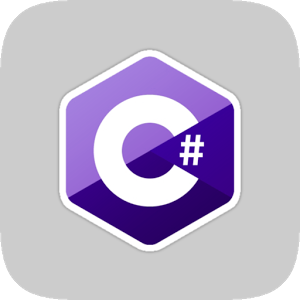10 recommended articles about classic examples
This article mainly introduces the common methods of loading the interface in C#, involving the operation of forms, which is of great practical value. Friends in need can refer to the examples of this article to describe the common methods of loading the interface in C#. Share it with everyone for your reference. The specific method is analyzed as follows: Method 1. Using event delegation method Object: Main form: FrmMain Loading form: FrmLoading Idea: Display the form FrmLoading before the main form is loaded. When the main form is loaded (the first time it is displayed) time), turn off FrmLoading. The C# code is as follows: The code is as follows: using System;using System.Collections.Generic;using System.ComponentModel;using System.Data;using System.Drawing;using System.Linq;using
1. Classic example of loading interface in C

#Introduction: This article mainly introduces the common methods of loading the interface in C#, involving the operation of forms, which is of great practical value. Friends in need can refer to it
2. 1200 Photoshop Classic Examples to Build a PS Master

##Introduction: This article The article shares 1,200 Photoshop classic examples to create a PS master
3. C# Concurrent Programming·Classic Examples Reading Notes

Introduction: I recently read the book "C# Concurrent Programming·Classic Examples". This is not a theoretical book, but it is a book that mainly talks about how to do better. This is a book on how to make good use of the APIs currently provided by C#.NET. Most of the books are examples, which are often used in daily development.
4. Classic example of Java recursive algorithm (classic rabbit problem)

5.
PHP Implementation of Classic Algorithms on PHP Programming Classic 300 Examples of PHP Recursive Algorithms Classic Examples PHP Classic Interview
Introduction: php, Classic: PHP implements the classic algorithm: Preface The following is the implementation of the classic algorithm through PHP, and the time consumption is calculated. The complexity of these algorithms can be compared by the time consumption. Insertion sort Bubble sort Selection sort Union sort Quick sort CODE$arr = [];for ($i = 0; $i < 5000; $i++) {$arr[] = rand(1, 10000); }//1 Insertion sort functioninsertionSort($arr) {for ($i = 1; $i < count($arr)6.
php is_file determines whether the given file name is a normal file ##Introduction:: php is_file determines whether the given file name is a normal file: is_file() function checks whether the specified file name is a normal file is_file — Tells whether the filename. is a regular file Usage bool is_file ( string $filename ) $file is a required parameter and returns TRUE if the file exists and is a normal file. Let’s look at a classic example of testing is_file. Copy the code as follows:
7.
Classic example of phpexcel exporting excelIntroduction: Classic example of phpexcel exporting excel
8.
Classic examples of using Python regular expressionsIntroduction: This article summarizes 17 classic examples of using Python regular expressions, which are very It’s good and has reference value. Friends who are interested can study together
9. ajax+php calls the classic instance without refreshing data_PHP tutorial
Introduction: ajax+php calls the classic instance without refreshing data. Ajax+php tutorial classic example of calling data without refreshing! DOCTYPE html PUBLIC -//W3C//DTD XHTML 1.0 Transitional//EN http://www.w3.org/TR/xhtml1/DTD/xhtml1-transitional.dtd html xmlns =http
10. php import excel classic instance_PHP tutorial
Introduction: php import excel classic instance. PHP tutorial import excel classic example require_once 'excel/reader.php'; // excelfile($filename, $encoding); $data = new spreadsheet_excel_reader(); // set output encoding. $data-setoutpu
[Related Q&A recommendations]:
javascript - How to get the scroll bar length in javascript?
The above is the detailed content of 10 recommended articles about classic examples. For more information, please follow other related articles on the PHP Chinese website!

Hot AI Tools

Undresser.AI Undress
AI-powered app for creating realistic nude photos

AI Clothes Remover
Online AI tool for removing clothes from photos.

Undress AI Tool
Undress images for free

Clothoff.io
AI clothes remover

AI Hentai Generator
Generate AI Hentai for free.

Hot Article

Hot Tools

Notepad++7.3.1
Easy-to-use and free code editor

SublimeText3 Chinese version
Chinese version, very easy to use

Zend Studio 13.0.1
Powerful PHP integrated development environment

Dreamweaver CS6
Visual web development tools

SublimeText3 Mac version
God-level code editing software (SublimeText3)

Hot Topics
 1376
1376
 52
52
 How to use various symbols in C language
Apr 03, 2025 pm 04:48 PM
How to use various symbols in C language
Apr 03, 2025 pm 04:48 PM
The usage methods of symbols in C language cover arithmetic, assignment, conditions, logic, bit operators, etc. Arithmetic operators are used for basic mathematical operations, assignment operators are used for assignment and addition, subtraction, multiplication and division assignment, condition operators are used for different operations according to conditions, logical operators are used for logical operations, bit operators are used for bit-level operations, and special constants are used to represent null pointers, end-of-file markers, and non-numeric values.
 What is the role of char in C strings
Apr 03, 2025 pm 03:15 PM
What is the role of char in C strings
Apr 03, 2025 pm 03:15 PM
In C, the char type is used in strings: 1. Store a single character; 2. Use an array to represent a string and end with a null terminator; 3. Operate through a string operation function; 4. Read or output a string from the keyboard.
 The difference between multithreading and asynchronous c#
Apr 03, 2025 pm 02:57 PM
The difference between multithreading and asynchronous c#
Apr 03, 2025 pm 02:57 PM
The difference between multithreading and asynchronous is that multithreading executes multiple threads at the same time, while asynchronously performs operations without blocking the current thread. Multithreading is used for compute-intensive tasks, while asynchronously is used for user interaction. The advantage of multi-threading is to improve computing performance, while the advantage of asynchronous is to not block UI threads. Choosing multithreading or asynchronous depends on the nature of the task: Computation-intensive tasks use multithreading, tasks that interact with external resources and need to keep UI responsiveness use asynchronous.
 How to use char array in C language
Apr 03, 2025 pm 03:24 PM
How to use char array in C language
Apr 03, 2025 pm 03:24 PM
The char array stores character sequences in C language and is declared as char array_name[size]. The access element is passed through the subscript operator, and the element ends with the null terminator '\0', which represents the end point of the string. The C language provides a variety of string manipulation functions, such as strlen(), strcpy(), strcat() and strcmp().
 How to handle special characters in C language
Apr 03, 2025 pm 03:18 PM
How to handle special characters in C language
Apr 03, 2025 pm 03:18 PM
In C language, special characters are processed through escape sequences, such as: \n represents line breaks. \t means tab character. Use escape sequences or character constants to represent special characters, such as char c = '\n'. Note that the backslash needs to be escaped twice. Different platforms and compilers may have different escape sequences, please consult the documentation.
 The difference between char and wchar_t in C language
Apr 03, 2025 pm 03:09 PM
The difference between char and wchar_t in C language
Apr 03, 2025 pm 03:09 PM
In C language, the main difference between char and wchar_t is character encoding: char uses ASCII or extends ASCII, wchar_t uses Unicode; char takes up 1-2 bytes, wchar_t takes up 2-4 bytes; char is suitable for English text, wchar_t is suitable for multilingual text; char is widely supported, wchar_t depends on whether the compiler and operating system support Unicode; char is limited in character range, wchar_t has a larger character range, and special functions are used for arithmetic operations.
 How to convert char in C language
Apr 03, 2025 pm 03:21 PM
How to convert char in C language
Apr 03, 2025 pm 03:21 PM
In C language, char type conversion can be directly converted to another type by: casting: using casting characters. Automatic type conversion: When one type of data can accommodate another type of value, the compiler automatically converts it.
 What is the function of C language sum?
Apr 03, 2025 pm 02:21 PM
What is the function of C language sum?
Apr 03, 2025 pm 02:21 PM
There is no built-in sum function in C language, so it needs to be written by yourself. Sum can be achieved by traversing the array and accumulating elements: Loop version: Sum is calculated using for loop and array length. Pointer version: Use pointers to point to array elements, and efficient summing is achieved through self-increment pointers. Dynamically allocate array version: Dynamically allocate arrays and manage memory yourself, ensuring that allocated memory is freed to prevent memory leaks.




